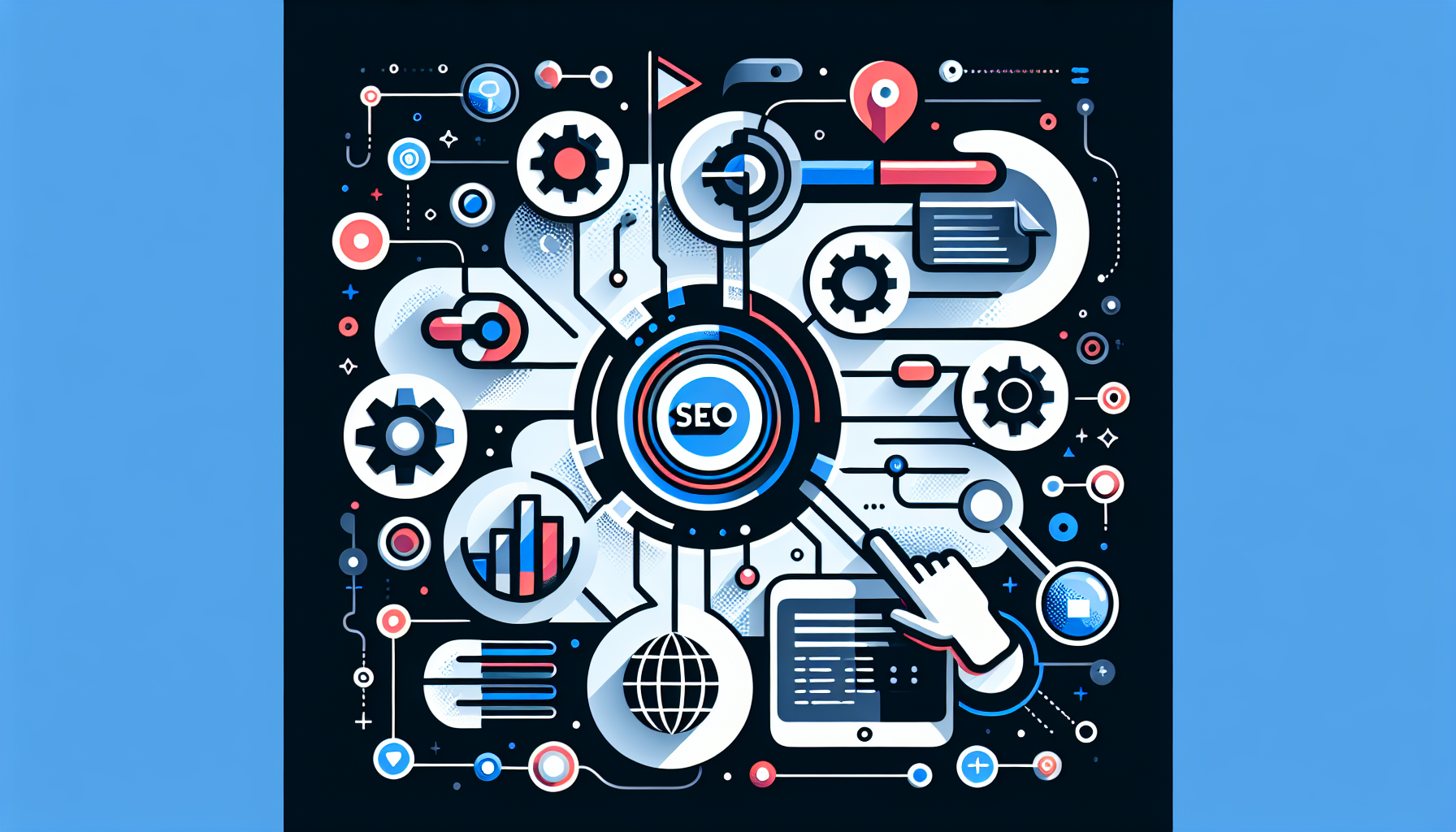Canonical tags, also known as “rel canonical” tags, are HTML elements used to prevent duplicate content issues in search engine optimization (SEO). When a website has multiple URLs that display similar or identical content, search engines might struggle to determine which URL should rank higher. This can lead to a situation where none of the pages rank well, or worse, search engines might consider the content as duplicate and penalize the site. A canonical tag helps by indicating the preferred version of a webpage, enabling search engines to prioritize the original content while ignoring duplicates.
Implementing a canonical tag involves adding a specific link element within the section of the HTML code on the duplicate or similar pages. For example, if you have a product page that is accessible by multiple URLs due to filters or tracking parameters, you can add a canonical tag pointing to the main version of the product page. This tells search engines that, despite the URL variations, they should consider only the designated URL for indexing and ranking purposes.
Moreover, canonical tags can manage both internal and cross-domain duplication issues. When used correctly, they ensure search engines attribute the appropriate page ranking signals such as backlinks, content quality, and user engagement metrics to the primary URL. This clarifies the preferred content and streamlines crawling and indexing processes. Ensuring the correct implementation of canonical tags is crucial for maintaining effective site hierarchy and authority in search results.
How canonical tags improve SEO

Canonical tags play an essential role in improving SEO by consolidating page signals. When multiple URLs lead to the same or similar content, search engines might divide link equity among those pages, reducing the chances of any single page performing well in search results. By pointing all duplicate pages to a single canonical URL, you ensure that all the link equity—such as backlinks, social shares, and user engagement—is attributed to the preferred version. This consolidation enhances the authority and relevance of the canonical URL, thereby improving its ranking potential.
Another key benefit is the enhancement of site crawl efficiency. Search engines allocate a specific crawl budget to each website, meaning they only have a limited amount of time to spend crawling and indexing your pages. Without canonical tags, search engines might waste resources crawling duplicate content, leaving less time to index other valuable pages on your site. By using canonical tags to direct search engines to the primary pages, you help them focus their crawl efforts, ensuring more comprehensive and effective indexing of your important content.
Canonical tags also protect your site from potential duplicate content penalties. When search engines encounter multiple pages with the same or very similar content, it can be unclear which page to feature in search results, sometimes resulting in none of them performing well. Worse still, if the duplication issue is widespread and persistent, search engines might consider it an attempt to manipulate rankings and apply penalties, which can significantly harm your site’s visibility. By correctly implementing canonical tags, you provide clear guidance to search engines, reducing the risk of these penalties and helping maintain your site’s SEO health.
Additionally, proper use of canonical tags can aid in the management of syndicated content. If you republish your content on other platforms or have agreements with other websites to share your material, canonical tags can be employed to ensure that the original source gets the credit. By placing canonical tags that refer back to the original publication, you help search engines determine the source of the content, thus preserving the authority and equity of your original page.
Common mistakes with canonical tags

One common mistake involves pointing canonical tags to the wrong URLs. This can happen when webmasters inadvertently set the canonical element to a different page that is not the preferred version or relevant to the content in question. This misdirection can confuse search engines, leading to improper indexing and potentially harming the SEO performance of both the target and original pages.
Another frequent error is failing to make canonical tags self-referential on pages that are unique and should be considered the primary source. Each unique page should include a canonical tag that points back to itself. Omitting this step may result in search engines not properly recognizing the intended canonical page, negatively impacting its ranking potential.
Occasionally, canonical tags are applied inconsistently. For instance, if different versions of similar pages point to different canonical URLs instead of a single preferred page, this inconsistency can dilute the effectiveness of the canonical tag strategy. Search engines then might split the ranking signals among these pages, reducing the overall SEO benefits.
Overuse or misuse of canonical tags can also be problematic. Implementing canonical tags on every single page indiscriminately, without considering the necessity or the specific context, can lead to confusion. It might create scenarios where search engines disregard your canonical tags altogether, thus nullifying your efforts to consolidate page signals.
One more error is neglecting to update canonical tags during site migrations or when changing website structures. If the URLs of your pages change due to a site redesign or migration to a new domain, it is crucial to revisit and update the canonical tags to point to the new URLs. Failure to do so can result in search engines indexing outdated pages, adversely affecting your SEO performance.
Lastly, not testing the implementation properly can introduce errors. After setting up canonical tags, it’s important to use tools like Google Search Console or third-party SEO audit software to verify that search engines are interpreting the canonical tags correctly. Missing this step could mean that issues go unnoticed, continuing to impact SEO negatively.
Implementing canonical tags on your website

To correctly implement canonical tags on your website, the first step is identifying instances of duplicate content. This often includes variations of product pages due to filtering options, session IDs, or printer-friendly versions of your articles. Once these pages are identified, you need to decide the preferred version of each page—the one you wish to rank in search engines.
Start by inserting the canonical tag within the section of your HTML code on the duplicate pages. It should look something like this:
This code snippet tells search engines that “https://www.example.com/preferred-url/” is the preferred version, whereas any duplicate URLs should not be prioritized.
For content management systems (CMS) like WordPress, plugins such as Yoast SEO or All in One SEO can simplify the process, allowing you to set canonical URLs directly from the page or post editor. These plugins often offer options to automatically set canonical tags based on specific rules, reducing the manual effort required.
When handling large websites with many duplicate content issues, it’s practical to use a bulk implementation method, such as through a CMS, or by modifying server-side scripts and templates. Custom scripts can be written in languages like PHP, Python, or JavaScript to dynamically set canonical tags based on URL patterns and user interactions.
Ensure that your canonical URLs are consistent. A key aspect is to avoid mixed signals. For instance, if your preferred URL uses “www” and HTTPS, make sure all canonical tags reflect this exact format. Inconsistent use of HTTP/HTTPS or “www”/non-www can create confusion and diminish the effectiveness of your SEO strategy.
In addition to pages within your domain, canonical tags can also be used to manage content syndication across different domains. For example, if you publish a guest post on another site, you can include a canonical tag in the article’s HTML pointing back to the original post on your site. This practice helps ensure that backlink and ranking benefits accrue to the original content.
Lastly, perform thorough testing post-implementation. Utilize tools like Google Search Console to see how Google is interpreting your canonical tags. You can also use the URL Inspection tool in Google Search Console to check for any discrepancies or potential issues. Regular ongoing monitoring is crucial, especially after website updates or redesigns, to confirm that canonical tags remain accurate and effective.
Monitoring and maintaining canonical tags

Consistent monitoring and maintenance are key to ensuring that canonical tags continue to serve their purpose effectively. Start by routinely reviewing your canonical tags, especially after major website updates, redesigns, or migrations. These events can often cause changes in URL structures, potentially rendering your existing canonical tags incorrect or outdated. During such reviews, verify that each page points to the intended canonical URL, ensuring there are no broken links or discrepancies.
Use tools like Google Search Console to check for indexing errors related to canonical tags. Through the URL Inspection tool, you can confirm if Google recognizes your specified canonical URL or if it has chosen a different page as the canonical version. Search Console will alert you to any issues, such as if Google is unable to follow the canonical tags as expected.
In addition to Google Search Console, consider using third-party SEO audit tools like Ahrefs, SEMrush, or Screaming Frog. These tools can provide comprehensive reports on your website’s SEO health, including details on canonical tag implementation. They can identify pages with missing or improper canonical tags and suggest corrective actions.
It’s also important to keep an eye on your website’s traffic and ranking metrics. Look for sudden drops in traffic or keyword rankings, as these could indicate issues with canonical tags or duplicate content problems. Regularly reviewing your analytics data will help you identify and address issues before they significantly impact your SEO performance.
Moreover, ensure that your team is educated and informed about the importance of canonical tags. Whether you manage your website in-house or through third-party developers, everyone involved should understand best practices for the use of canonical tags. This can prevent common mistakes and ensure consistency across all content updates and new page additions.
Lastly, stay updated with search engine guidelines and algorithm changes. SEO is a constantly evolving field, and practices that are effective today might need adjustments tomorrow. Follow SEO news websites, attend industry conferences, and participate in online forums to keep your knowledge current. By staying informed, you can adapt your canonical tagging strategies to align with the latest search engine expectations and maintain optimal SEO performance.

